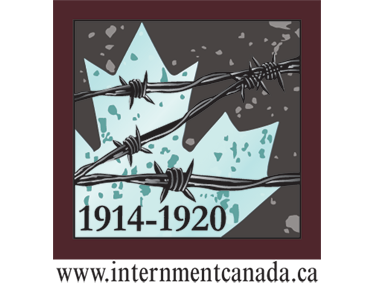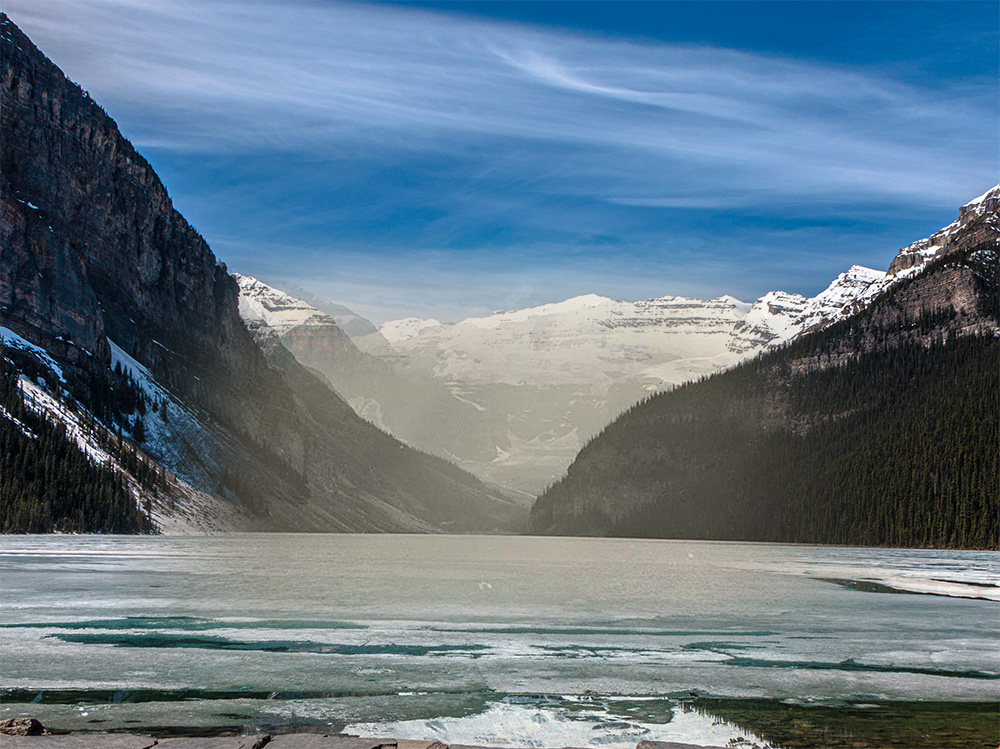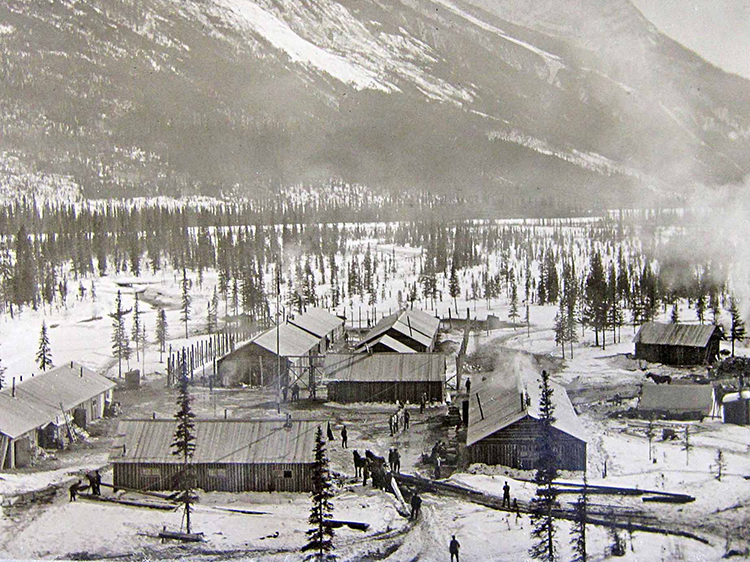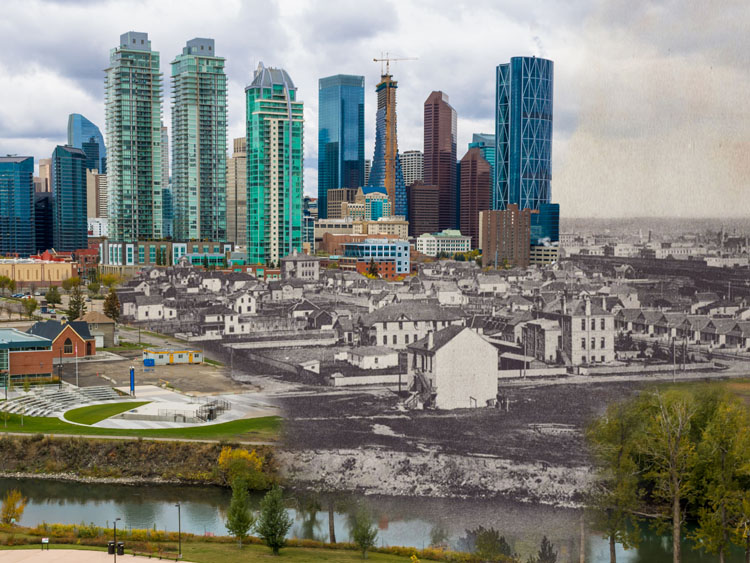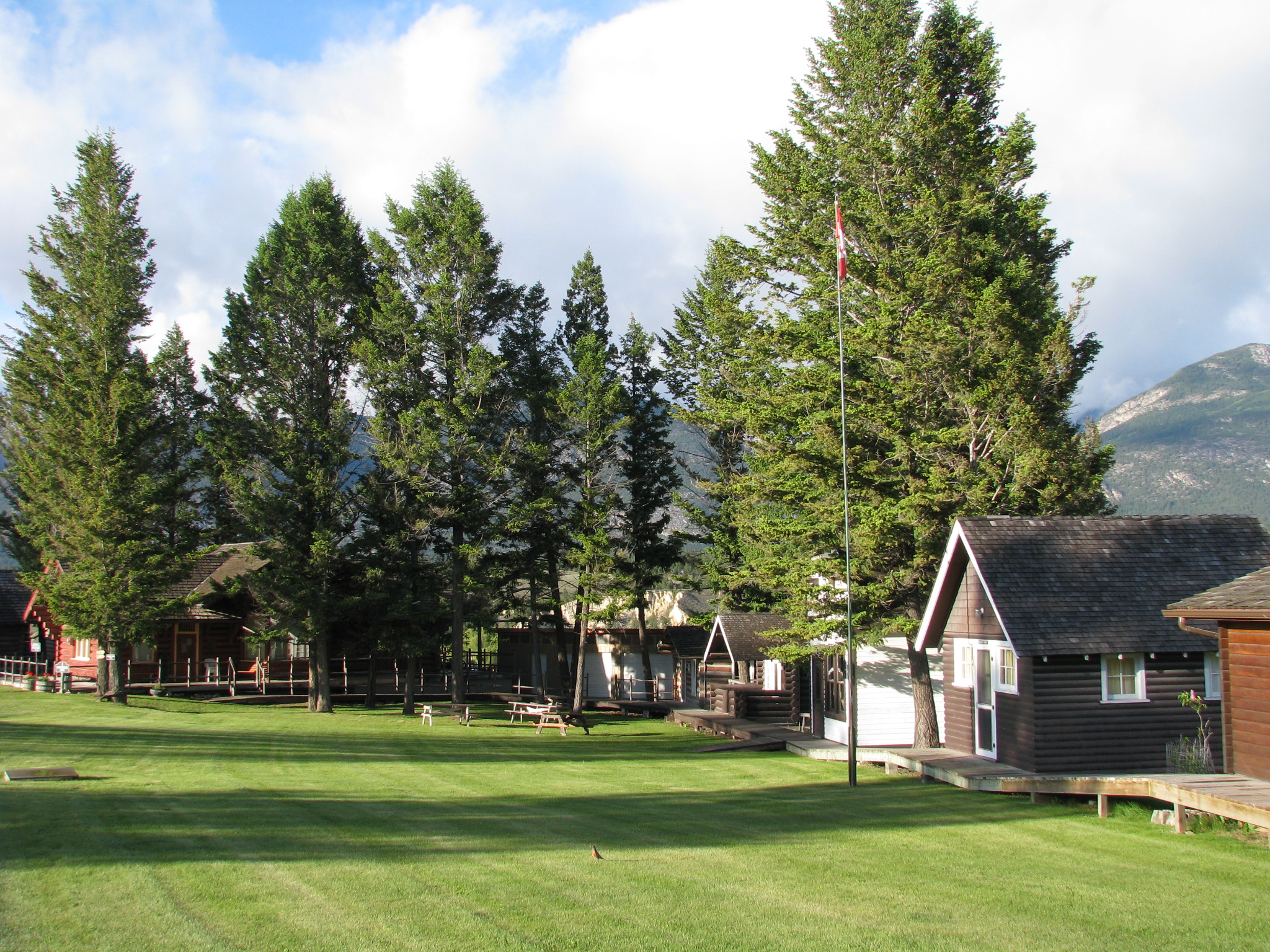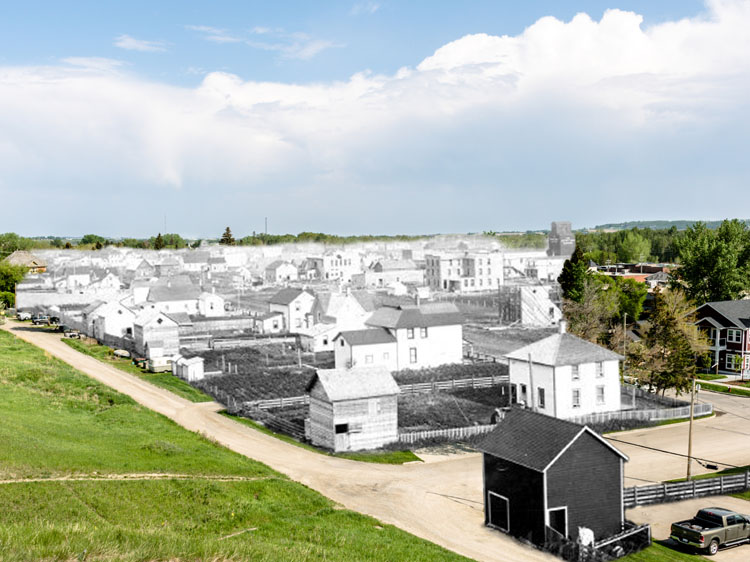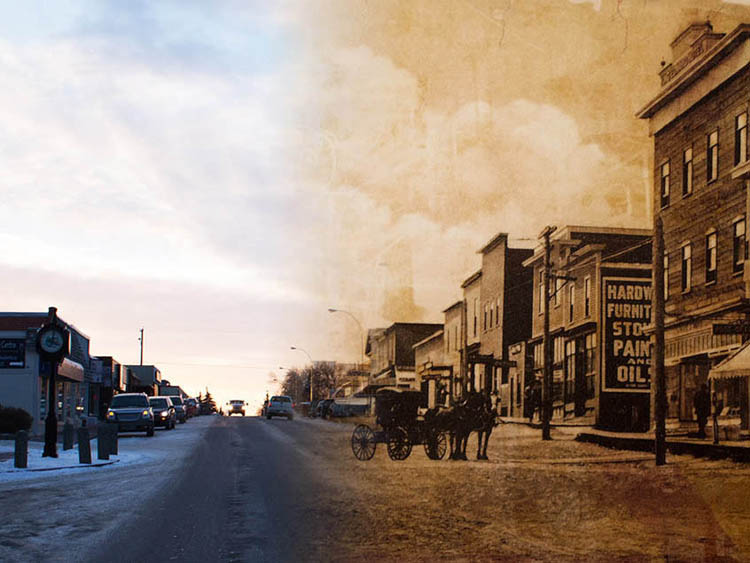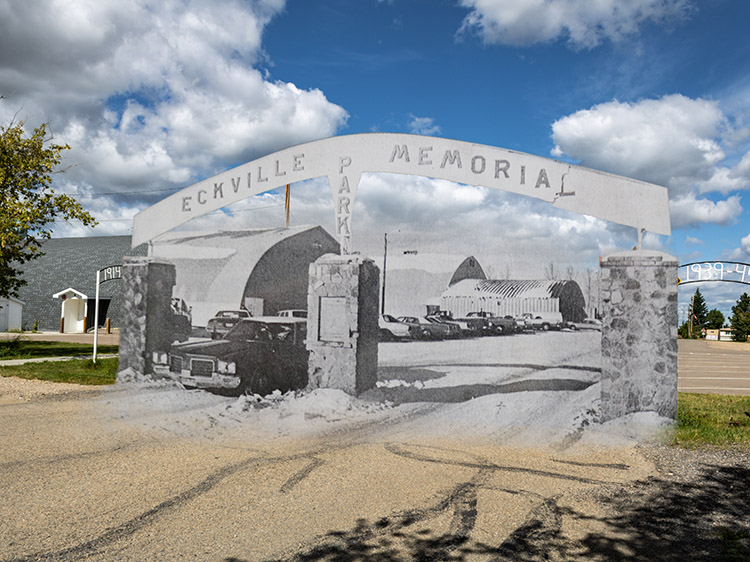Banff National Park is centered on the Kicking Horse Pass, one of the few passes through the Rockies that permits east-west access through that formidable spine of jagged peaks and glaciers. It has served as a highway for humans as long as humans have inhabited these lands. A huge and diverse range of Indigenous peoples have lived in or passed through here since at least the end of the last Ice Age, some 11,500 years ago. In the mountain passes and in the foothills, these peoples hunted bison, fished in the river, gathered plant medicines, and carried out sacred ceremonies. They were also drawn to the healing powers of Banff's natural hot springs. When European fur traders and missionaries began to arrive in this area in the 18th and early 19th centuries, the Indigenous peoples showed them this strategic pass through the Rockies. It wasn't until the 1880s with the building of the Canadian Pacific Railway that settler-colonial interest in this region took off. Railway surveyors chose this pass for the route, and in 1883 three railway workers came across the remarkable Cave and Basin hot springs. The site rapidly developed into a major tourist attraction, and the CPR's president, Cornelius Van Horne, was keen to promote it, saying "If we can't export the scenery, we'll import the tourists." Competing claims over ownership of the springs led the Canadian government to enshrine it as a protected reserve. In 1887 it was expanded into Rocky Mountains Park. It was Canada's first National Park and marked the birth of Canada's national park system. Development of the park's infrastructure was slow, and the Dominion Parks Branch, the forerunner of Parks Canada, had limited funding. During the First World War the Canadian government interned thousands of so-called 'enemy aliens'—immigrants from countries with which Canada was at war—primarily for completely arbitrary reasons. The Dominion Parks Branch saw an opportunity and requested their use as forced labourers to build up the park's infrastructure. The government assented, and from 1915 to 1917 hundreds of internees, who mostly proved to be ethnic Ukrainians, were forced to work at gunpoint in often appalling conditions to build tourist infrastructure like the road to Lake Louise or the Banff Springs Golf Course. The two internment camps, at Castle Mountain and the Cave and Basin site, are the subject of this project. After the war the park's popularity continued to grow, and the town of Banff along with it, though this growth was constrained by its location within the park's legal jurisdiction. In 1930 the park was renamed Banff National Park. Today the park and its breathtaking mountain scenery are renowned internationally and draw millions of visitors a year.
This project has been made possible by a grant from the Endowment Council of the Canadian First World War Internment Recognition Fund.
The Banff area, known as "Minhrpa" (translated in Stoney Nakoda as "the waterfalls") is part of the Treaty 7 territory where we recognise oral practices of the Îyârhe Nakoda (Stoney Nakoda) – comprised of the Bearspaw, Chiniki, and Wesley First Nations – as well as the Tsuut'ina First Nation and the Blackfoot Confederacy comprised of the Siksika, Piikani, Kainai. This territory is home to the Shuswap Nations, Ktunaxa Nations, and Métis Nation of Alberta, Region 3. We acknowledge all Nations who live, work, and play here, help us steward this land, and honour and celebrate this place.
Donate Now
If you enjoyed this free content, we ask you to consider making a donation to the Canada-Ukraine Foundation, which is providing urgently needed humanitarian aid to Ukraine.
The Ukrainian people are heroically defending their homeland against a genocidal war of Russian aggression. The humanitarian situation is critical and the needs immense. 100% of all donations made through this link go directly to supporting the people of Ukraine. Recently funded initiatives by the Canada-Ukraine Foundation include demining and removal of unexploded ordnance, and the evacuation of thousands of deaf people from the warzone.
Walking Tours
Explore
Banff
Then and Now Photos
The Superintendent's Cow
1888
A view of the Banff Townsite a year after the establishment of the Rocky Mountains Park centered on Banff. We're looking towards Cascade Mountain here, and you can see a cow being led up to the street by a man. According to the archival description the cow belonged to the park's superintendent George A. Stewart.
The First CPR Station
1888
The first railway station built at Banff was a rather humble affair.
Church on Lynx Street
ca. 1890s
The Catholic Church on Lynx Street, and to the right is the first shack of George Fear, an early settler. Inspector Frank Harper of the North-West Mounted Police is the man on horseback.
Chalet from the Rear
ca. 1890s
This is a very early version of the chalet at Lake Louise. This one was built in 1890 and only lasted until 1893, when it was destroyed by fire. This was the fate of several early versions of the chalet, but the lake and the extraordinary breathtaking scenery kept people coming back, rebuilding the chalets. The Chateau that stands today has avoided burning down for quite a while.
Old CPR Station
ca. 1890
The old CPR station built in the style of a log cabin.
A Curling Match
1899
A group of men are curling on the frozen tennis courts on the grounds of the sanatorium.
Banff Springs Hotel
ca. 1900s
A view of the Banff Springs Hotel from across the Bow.
Couple on the Bridge
ca. 1900
A woman peers over the railing of the Bow River Bridge while a man looks on.
Rowing on Lake Louise
ca. 1905
A woman rows across a placid Lake Louise in the shadow of the mighty Victoria Glacier.
Canoes & Mt. Rundle
Library and Archives Canada 3302493
ca. 1900s
A breathtaking view of canoes on the Bow River dominated by the jagged peak of Mount Rundle in the distance.
The CPR Hotel
Whyte Museum Archives V116 / PA - 26
ca. 1900
The hotel that is now known as the Banff Springs Hotel seen from across the Bow River. It was built by the Canadian Pacific Railway as the centrepiece of their plans to draw tourists to Banff.
Bow from the Fairmont
Library and Archives Canada 3302594
ca. 1900s
The Bow River meanders through the Kicking Horse Pass in this photo taken from the Fairmont Banff Springs.
National Park Office
1908
The National Park Office, that is now the Banff Park Museum.
Woman at the Bridge
ca. 1909
A fashionably dressed woman poses for a photo at the end of the Bow River Bridge.
Mount Royal Hotel
Whyte Museum Archives V92 / VI / PA - 6
ca. 1910s
The Mount Royal Hotel, which is still in business today, though the original building has since been replaced.
Cave & Basin View
Canada First World War Internment Recognition Fund
ca. 1910s
A view towards the Banff townsite, which can be seen at right, from the rooftop of the Cave & Basin National Historic Site.
Mount Royal Hotel
ca. 1910s
Banff Avenue looking south. The building on the left is the Mount Royal Hotel.
Bretton Hall
ca. 1910s
The entrance to Bretton Hall, part of the sanitarium that once occupied this spot. Now it is the Park Administration building.
Viewing the Bow
ca. 1910s
People viewing Bow Valley from the terrace of the Banff Springs Hotel.
A Successful Climb
1910
The caption tells us that this photos shows Arthur B. King and two friends returning to Banff's train station after successfully completing a climb of Mount Temple. They appear quite pleased with themselves, and rightfully so!
Weapons Practice
ca. 1916
Guards at the Cave & Basin internment camp practice the rudiments of firearms handling, and can be seen reloading their rifles in unison.
Lake Louise View
Whyte Museum Archives V187 / PA - 94
ca. 1920s
Looking out at Lake Louise, and the formidable Victoria Glacier beyond.
Victoria Glacier
Whyte Museum Archives V187 / PA - 19
ca. 1920s
A view of Lake Louise and beyond it, the famous Victoria Glacier.
Townsite View
Whyte Museum Archives V113 / PA - 17
1925
Cars ply Banff Avenue in this photo taken from the sanatorium that is now site of the Banff National Park Administration Building.
Chateau Lake Louise
Whyte Museum Archives V187 / PA - 98
ca. 1920s
A view of the impressive Chateau Lake Louise, today a Fairmont hotel. The oldest surviving portion of the hotel was completed in 1913, while other segments have been destroyed by fire and later rebuilt.
Disembarking at the Station
Whyte Museum Archives NA 179 - 1
1945
Men and women disembark from a train on Banff Station's platform.
CPR Train Stop
Whyte Museum Archives NA 179 - 3
1945
Passengers disembark from a CPR train at Banff Station.
Time Gardens View
Whyte Museum Archives V252 / PA 357 - 63
ca. 1940s
Looking from the Time Gardens on the Park Administration Grounds towards Banff Avenue, with Cascade Mountain beyond.









